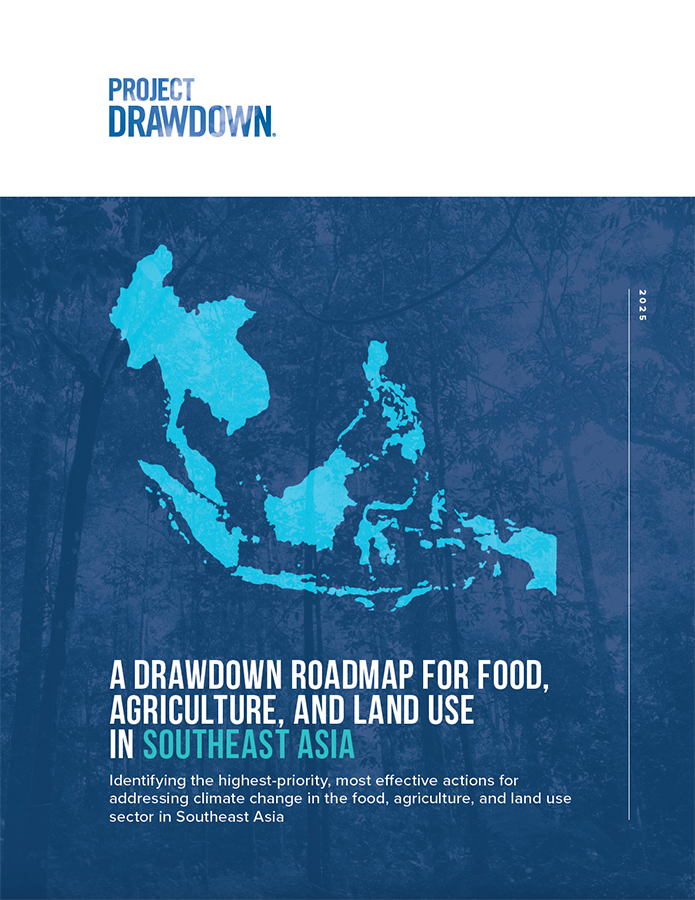To help avoid dangerous levels of climate change, we need to rapidly cut greenhouse gas emissions from the food, agriculture, and land use (FALU) sector. We also need to preserve natural carbon sinks, boost nature-based carbon removal, and promote food system changes that enhance both climate resilience and human well-being.
Globally, the FALU sector is directly responsible for 20–25% of greenhouse gas emissions. But in Southeast Asia, this sector contributes about 54% of greenhouse gases, making it one of the most important regions in the world for climate action for agriculture and land use.
The Drawdown Roadmap for Food, Agriculture, and Land Use in Southeast Asia details a science-based portfolio of actions – outlining exactly what is needed, when and where, to maximize the impact of greenhouse gas reduction efforts in Southeast Asia.
We synthesized findings from hundreds of data sources to quantify climate solutions with the most potential to reduce emissions in a given location, and summarized those results within each province. In doing so, we identify hot spots of emissions – places that have disproportionately high emissions with the greatest potential for emissions reduction per land area.
Key Findings
- We identify opportunities to reduce direct emissions from FALU in Southeast Asia by 1.9 billion metric tons of carbon dioxide-equivalent (CO₂‑eq ) per year.
- Deforestation and other land cover changes are the biggest drivers of emissions in 75% of provinces across Southeast Asia. Meanwhile, rice cultivation dominates emissions in 23% of provinces, and overuse of nitrogen fertilizers leads in 2% of provinces.
- Rice production generates almost one-third of regional methane emissions. Improved water management on rice fields could reduce emissions by 64 million metric tons of CO₂‑eq without reducing yields.
- Targeted interventions in high-priority areas can yield major emissions reductions. For example, protecting 20% of carbon-dense forests in Southeast Asia offers 83% of the carbon savings potential for forest protection across the region; 64% of emissions savings from improved rice production could be achieved on 20% of rice farms; and 80% of emissions savings from improved nutrient management would come from focusing on 20% of farms using excess fertilizers.
- These climate solutions have many additional benefits, such as improved air and water quality, improved human health, and enhanced resilience to changing temperature and precipitation patterns.
What You Can Do
- Download the roadmap by clicking the GET THE PUBLICATION button on this page.
- Sign up for the launch webinar happening on October 29 at 10:00 PM ET (October 30 at 10:00 AM GMT+8)
- Share the roadmap across your social media channels and tag @ProjectDrawdown
- Subscribe to our biweekly newsletter for expert insights, cutting-edge research, and inspiring stories, all year long.


